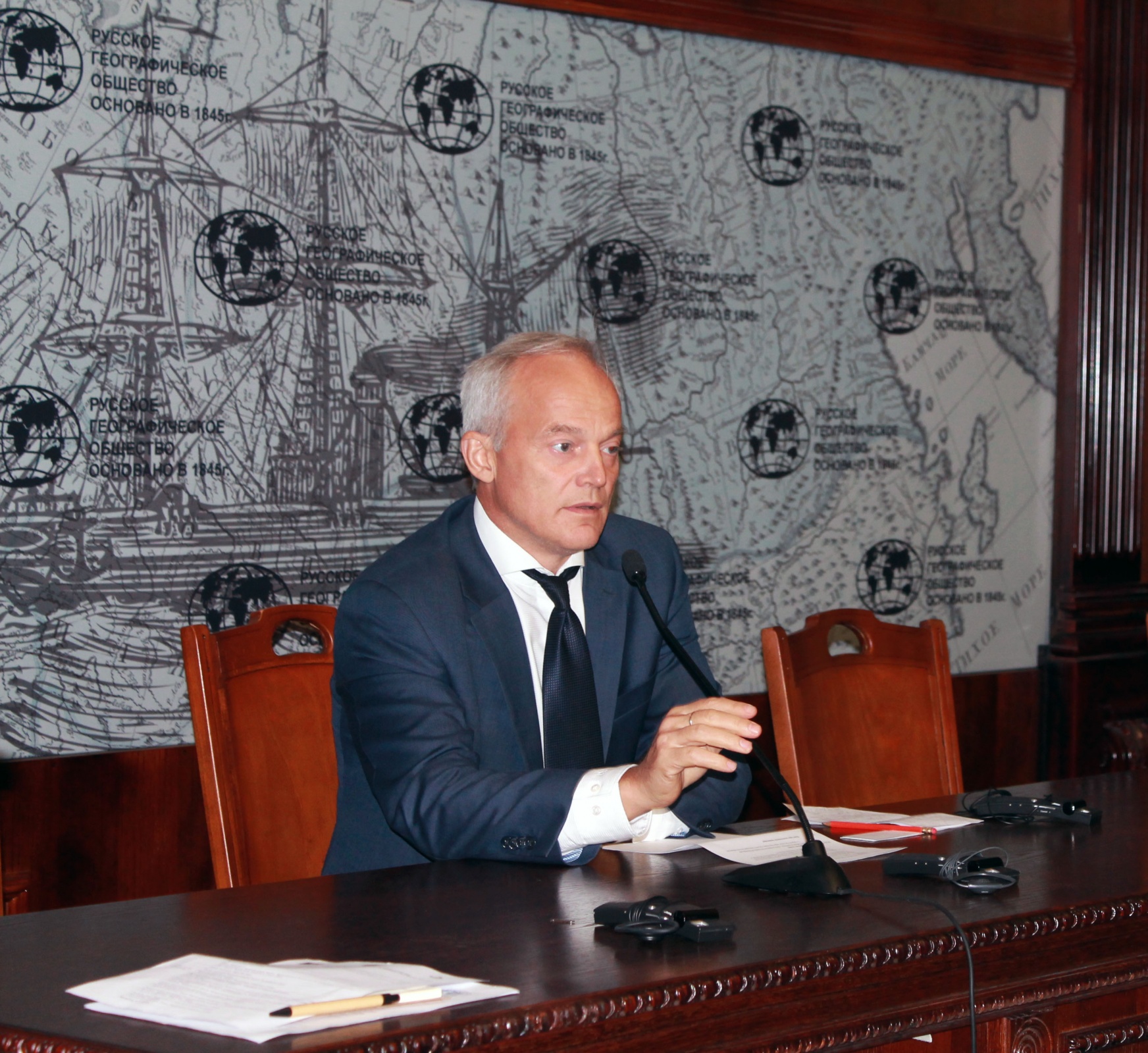by Patrick Osborne
The seminar, “Russia and Norway: the Polar Connection” took place on September 14, 2016 at the Russian National Geographic Society in Saint Petersburg. ENERPO students and professors were able to take part in the Polar exhibition and seminar commemorating the 20th anniversary of the Arctic Council. Professor Nikita Lomagin, Academic Director of ENERPO, chaired the final panel on “Examples of successful cooperation in the Arctic”.
The first discussion group looked at the polar connections between Norway and Russia throughout history. Exploration in the Arctic for Norway and Russia has been an important part of a historical legacy for both parties for more than a 1000 years. The first records of trade agreements between Norwegians and Russians date back to 1326. From these humble origins many early explorers and scientists have become household names in Norway and Russia like Valerian Albanov, Roald Amundsen, Vitus Bering, and Georgiy Brusilov. The audience also got to learn about the personal stories of the expeditions tied to trying to get to the North Pole in 1895-1896 as well as Roald Amundsen’s journey of navigating the Northwest Passage. Ronald Amundsen became an expert on the people of the polar regions after living with the Inuit in North America for 3 years.
An important issue that was discussed in the next panel discussion was the “Arctic Council: 20 years of successful cooperation.” Although the Arctic Council has no regulatory authority, it has achieved considerable success in generating policy-relevant knowledge about the Arctic and bringing Arctic issues to the attention of global forums. This is exemplified in such negotiating committees as the one that produced the 2001 Stockholm Convention on Persistent Organic Pollutants. (Berkman and Young, 2009: 340) There is also room to enhance the effectiveness of the Arctic Council and its various subsidiary bodies in raising the profile of Arctic concerns in broader efforts to address global issues like climate change and the loss of biological diversity. To be effective in the next phase, the Arctic Council can and should make some adjustments in its current operating procedures. (Young, 2009: 80) Here issues that could be brought to the table are the ideas of giving indigenous cultures stronger voice on the Arctic Council. The legal and financial structures that promote the preservation of Arctic Peoples and cooperation of civic organizations and governments need to be analyzed in more detail, according to the panelists.
Finally the panel chaired by Dr. Lomagin discussed some examples of successful cooperation in the Arctic between Russia and Norway such as the joint management of the fish stocks in the Barents Sea and cooperative efforts in research and education.
Overall, the ENERPO students and professors learned a great deal that day about the past relations between Russia and Norway in context to the Arctic as well as areas in the future that could see this successful partnership grow. Overall, it was an informative exhibition and seminar that was very interesting to take part. Issues surrounding the Arctic are of the utmost importance when dealing with energy security and geo-politics in the modern age. The more representation of different interest groups at forums like this continually makes for an interesting dialogue and discourse for the improvement in handling these critical issues surrounding the Arctic.
Berkman, P. A., Young, O.R. (2009) Governance and Environmental Change in the Arctic Ocean. Science Magazine. Vol. 324, 17 April, pp. 339-340
Young O.R., (2009) Whither the Arctic? Conflict or cooperation in the circumpolar north, Polar Record, vol. 45(1), pp. 73-82

